Contents
Polypore pitted (Lens archer)
- Division: Basidiomycota (Basidiomycetes)
- Subdivision: Agaricomycotina (Agaricomycetes)
- Class: Agaricomycetes (Agaricomycetes)
- Subclass: Incertae sedis (of uncertain position)
- Order: Polyporales (Polypore)
- Family: Polyporaceae (Polyporaceae)
- Genus: Lentinus (Sawfly)
- Type: Lentinus arcularius (pitted polypore)
:
- Polyporus casket-shaped
- Polyporus decorated
- Polypore vase-like
- Trutovik vaulted
- Trutovik casket-shaped
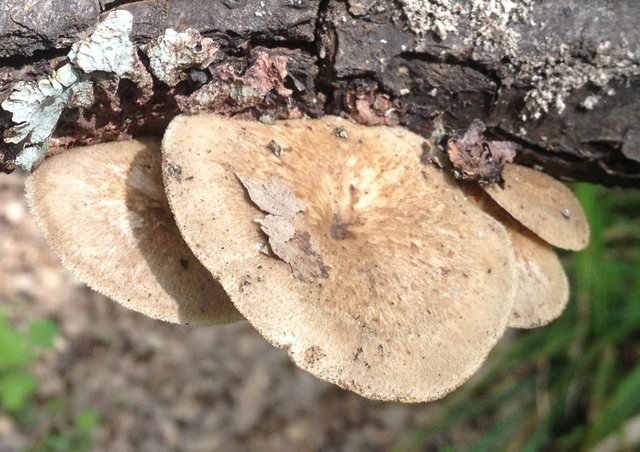
This small tinder fungus appears on hardwoods in the spring and is often caught by morel hunters. Sometimes it can also grow on coniferous deadwood. It is rather small, with a central stalk and whitish angular pores. The most distinguishing feature of Polyporus arcularius is its finely colored, finely hairy (“cilia”) hat along the edge. The color of the cap varies from dark brown to light brown.
Polyporus arcularius will probably be assigned to a different genus in the not too distant future. A 2008 microscopic study showed that this species, along with Polyporus brumalis (winter tinder fungus), is much closer to Lentinus species – sawflies (which have plates!) and to Daedaleopsis confragosa (tuberous tinder fungus) than to other species. Polyporus.
Ecology: saprophyte on hardwoods, especially oaks, causes white rot. Grows alone or in small groups. Sometimes it grows from the remnants of wood buried in the ground, and then it seems that it grows from the ground. Appear in the spring, there is information that occurs until the end of summer.
head: 1-4 cm, in quite exceptional cases – up to 8 cm. Convex in youth, then flat or slightly depressed. Dry. Dull brown. Covered with small concentric scales and hairs of brown or golden brown color. The edge of the cap is decorated with tiny but well-defined protruding hairs.
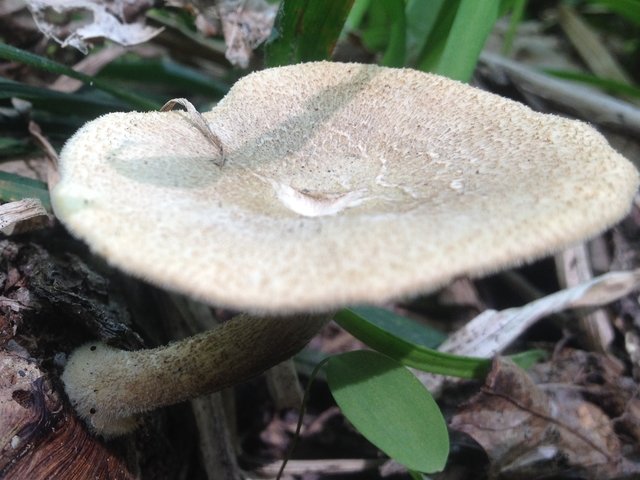
Hymenophore: porous, descending, whitish in young mushrooms, then brownish. Does not separate from the pulp of the cap. Pores 0,5-2 mm across, hexagonal or angular, arranged radially.
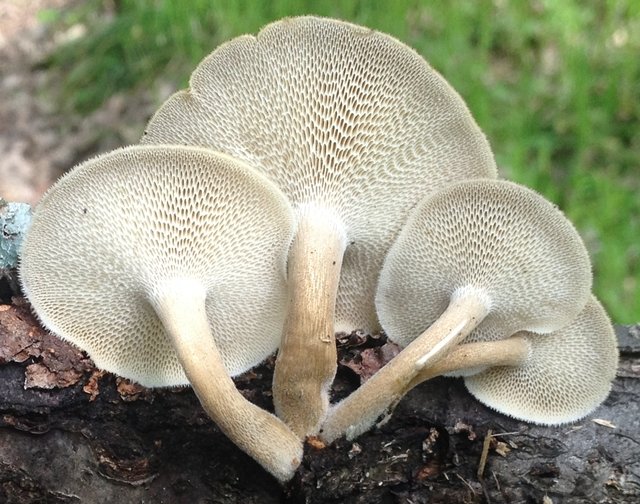
Leg: central or slightly off-center; 2-4 (up to 6) cm long and 2-4 mm wide. Smooth, dry. Brown to yellowish brown. Covered with small scales and hairs. Rigid, expressed longitudinally fibrous.
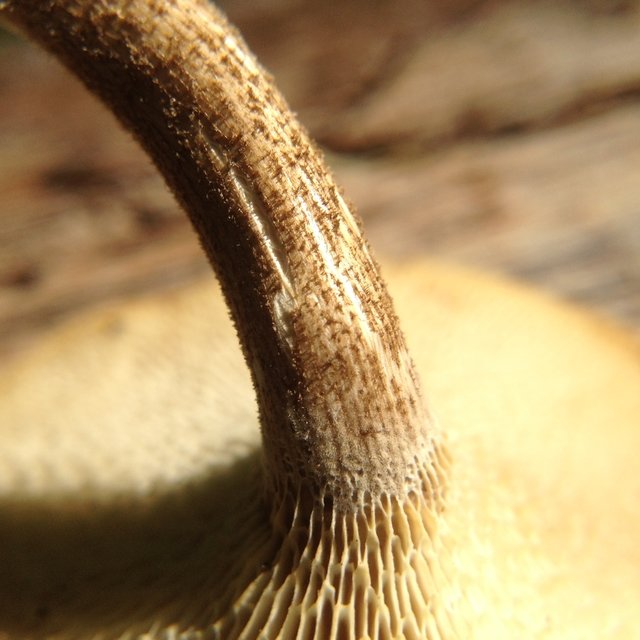
Pulp: White or creamy, thin, hard or leathery, does not change color when damaged.
Smell: weak mushroom or does not differ.
Taste: without much taste.
spore powder: Creamy white.
Microscopic characteristics: spores 5-8,5 * 1,5-2,5 microns, cylindrical, smooth, colorless. Basidia 27-35 µm long; 2-4-spore. Hymenal cystidia are absent.
Information is contradictory. One thing can be said with a great deal of certainty: the mushroom is not poisonous. European tradition classifies it as an inedible mushroom, although, like many other polypores, it is quite edible at a young age, until the flesh becomes too hard. Another thing is that his leg is almost always stiff, and in the hat the layer of pulp is catastrophically thin, about one millimeter, and there is not much to eat there. The tinder fungus is on the list of edible mushrooms in countries such as Hong Kong, Nepal, Papua New Guinea and Peru.
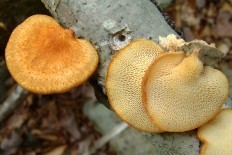
Neofavolus alveolaris (Neofavolus alveolaris)
also a fairly early mushroom, it has been growing since April, has a similar color and a very similar hymenophore, however, it should be noted that the tinder fungus has practically no stem.
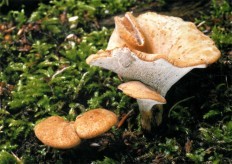
Variable polypore (Cerioporus varius)
in a variation with a centrally located stem, it can be similar to the pitted tinder fungus, however, the variable tinder fungus, as a rule, has a black stem and a smooth cap surface.
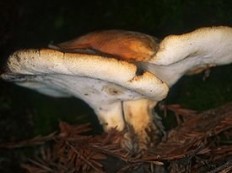
Tuberous fungus (Polyporus tuberaster)
much larger. These species can only be similar in photographs.
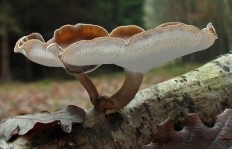
Winter polypore (Lentinus brumalis)
also slightly larger on average, distinguished by a darker color of the cap, often with a pronounced concentric pattern of alternating darker and lighter brown zones.
Photos used in the gallery of the article: Alexander Kozlovskikh.









